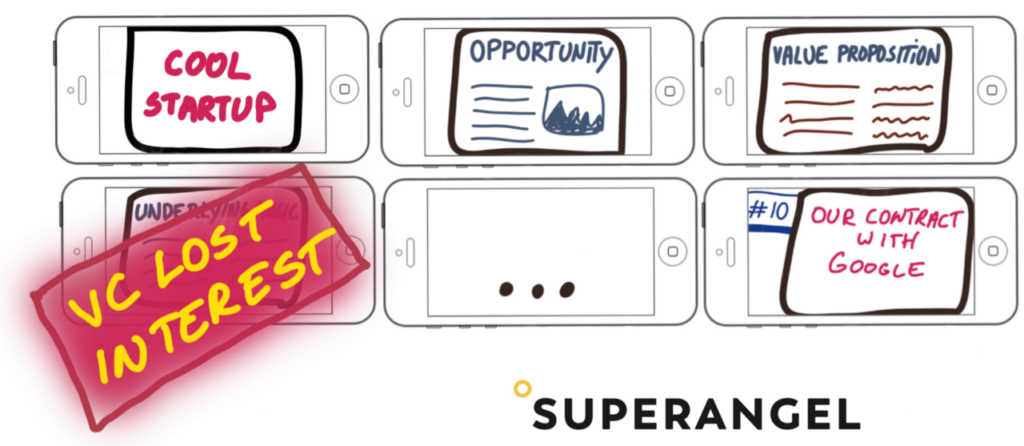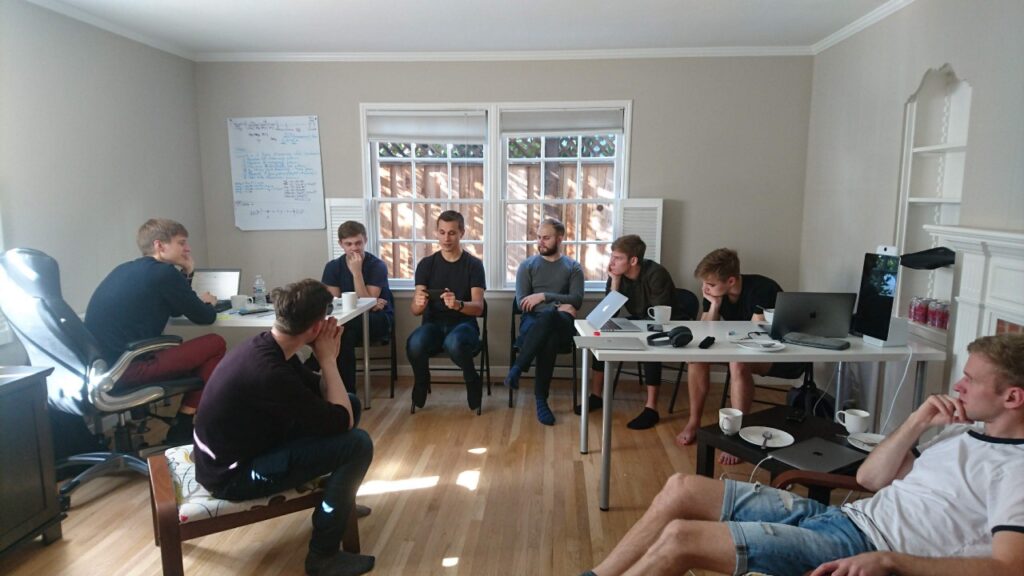As a startup founder raising money you finally have a chance to introduce yourself during a conference coffee break to a VC you are after. She asked you to send her a pitch deck. You have tried to cram everything on to 10 slides, as suggested by guru Guy Kawasaki. You send your deck to the VC and…they say they couldn’t follow it, so they lost interest. What gives?
Within the last 5–10 years, the way VCs (and all of us) consume (and especially discover) information has moved from desktop-first to mobile-first. If your deck looks anything like the one below, and you also ignored Kawasaki’s guidelines, then getting people engaged is an uphill battle:

During the Alpine House accelerator we did a special session in order to update start-up founders knowledge and discuss what the new rules of pitch decks for VCs are.

If possible don’t send your slides in advance before a meeting, and try to set up a face to face meeting first.
Most likely you still have to send your slidedeck in advance from time to time. Here are 5 tips from Superangel to founders for creating engaging (and mobile-friendly) slide decks:
#1. Don’t waste your prime real estate for general keywords.
Assume the role of a VC swiping through your slides. The first things you see is the headline — if that’s the only thing they remember, what is the message you’d like them to remember? “Opportunity”, “Value proposition”, “Market Size” just take up very valuable real estate and if the rest is a two-paragraph text then most probably they will decide to read your slides sometime later from a laptop, which most likely means…never.
# 2. Slide titles should tell a story.
Your slide titles should be simple to understand statements explaining what is the core problem, what is your solution, and why the opportunity is NOW. This way you can build interest and make sure your message gets delivered, regardless if it’s on mobile or desktop.
Do a test: write out the titles of your slides and read them as a story. Is it a meaningful and a catchy story raising their interest in meeting you? If not, you have work to do. If you do it right, you can significantly simplify the content of your slides by reducing the noise in each slide, allowing for more than 10 slides. We’ve seen 20–30 slide decks that are engaging, proving that the slide count is just an arbitrary number.
#3. What is your Purple Cow?
Graphics and photos can be very powerful if you use them right. Avoid stock photos if it feels manufactured. Also, avoid images that have nothing to do with your message or your brand, such as a series of mountain range photos for your new accounting SaaS. General brand building and marketing tip: read Seth Godin’s book “Purple Cow”.
#4. Your second slide must be the most memorable.
Although you a have chance to get their attention span for 20–25 slides it will never happen if your second slide is not catchy and memorable. Your first slide can be your start-up’s name and logo or info graphic or catchy sentence. But your second slide must deliver a message that you might be the next unicorn.
#5. Your slides have to work without you.
If you are the only one in your start-up who can present the slides and they make sense only if you present them, you have some work to do. You do not have enough time to be present every time somebody wants to read your slides. Test and ask for feedback to validate how independent your slides actually are. Or ask your fellow founders or team mates to present your slides and see how they understand them.
Of course, as your startup grows and you have more market proof to back up your story, you will need more detailed slides in your next fundraising deck. In that case you have the freedom to include more content in your slides, as people will be putting more money into the company, and following the guidelines presented here will make even more sense.
This is it. Let us know if you have any questions about your deck. Go get them!
Are you an early stage startup founder? Do you want to get faster access to know knowledge provided by Superangel and reach to a next level? Check out our location-independent Alpine House accelerator program.
Superangel tips were summarized by Kalev Kaarna
